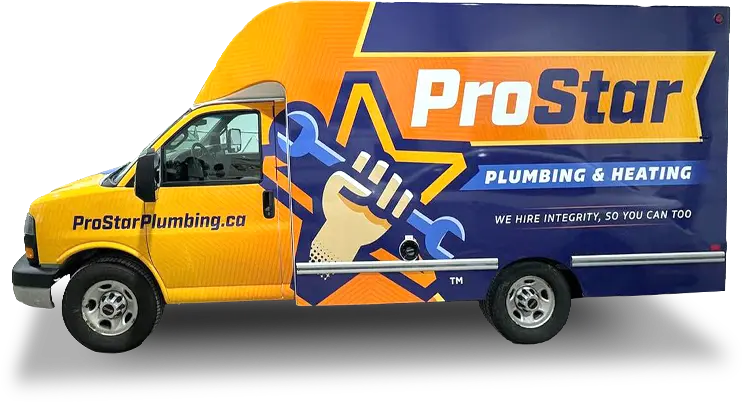Got a plumbing emergency?
It may be alluring to fix the problem on your own. But if you lack training and experience, you could likely make the problem worse, causing more serious damages that would urgently need hours of professional repairs.
However, as an informed homeowner, it’s important to understand and recognize the different types of pipes used within your house. If you are looking for plumbing services in Calgary, please follow the later part of the article. Before that, here’s a quick overview of plumbing pipes commonly seen and used today; their uses, and benefits.
Content of the article
- Evolution of plumbing pipes
- The most commonly seen plumbing pipes
- Bonus Tip – How to choose the right plumbing pipe?
- Conclusion
Plumbing pipes – Then and Now
Looking back, baked clay and straw were used to make the earliest form of pipes. Over time, the world also saw the use of wood log pipe, and later lead piping. As new technologies surfaced and priorities of the plumbing system and design changed, pipes also saw major reinventions.
Today, plumbing pipes come in different shapes and sizes, each having its own purpose. The pipes used now are made using various types of materials. Their durability, structural integrity, and shape support the steady and uniform supply of water to every fixture; while creating a powerful drain, vent, and waste system. From PVC to ABS, different types of pipes serve unique jobs and support the evolving requirements of modern homeowners.
The 5 most commonly seen plumbing pipes today
1) PEX – A powerful, all-weather pipe for different residential uses
Cross-linked polyethylene (PEX) pipes are a relatively new tubing choice for residential remodeling. They enjoy quite a few benefits over other pipe variants, such as PVC and copper. PEX cuts effortlessly, it is durable enough to hold out against below freezing or high heat temperatures, also flexible enough to install and fit even in challenging areas. These pipes are gaining limelight for their physical flexibility and long-term durability.
2) PVC – Strong, light-weight pipes with cost-performance benefits
The white or cream-colored pipes made from polyvinyl chloride (PVC) exhibit dismal performance when used to transport hot water. Regarding the benefits, they are easy to cut and install. They exhibit powerful chemical resistance and their leak-free joints prevent water loss. They also have a long performance record and a very high life expectancy. Best of all, they cost low compared to the benefits they offer.
3) ABS – Affordable, easy to install drain pipes
The acrylonitrile butadiene styrene (ABS) pipes that come in black color are good for drain, waste, and vent usage. Compared to metal pipes, they are affordable, easier, and faster to install, they can be glued together with primer and solvent but improper installation can result in sagging or bowing.
4) Copper – Traditional, aesthetically pleasing plumbing pipe
Copper pipe has long been used for water supply lines for a number of advantages. They are highly durable and recyclable, the aesthetically pleasing pipes can resist corrosion and are uninfluenced by UV rays and thus they easily qualify to remain exposed as part of the exterior installation. The ductility of the metal allows it to take desired shapes as needed by a plumber, eliminating the need for frequent elbow joints. But they are costly, and their installation and repair are labor-intensive.
5) Galvanized – Still found in older homes, used for limited use in repairs
Usually seen in older homes, these pipes are used for water supply and drain lines. They don’t perform well to supply non-potable water. Though cheaper when compared with copper, and good at heat and flame resistance, their cons made them an unpopular plumbing pipe choice. They break down over time, can leach traces of rust into the water. And, they are not very friendly to work with, and as such residential plumbers often recommend replacement over repair.
Bonus Tip – How to choose the right plumbing pipe?
When choosing plumbing pipes, keep in mind your home’s structural design, the purpose the pipes are likely to serve. It is highly recommended you go for pipes that have minimal environmental impact. A professional plumber in Calgary will help you pick pipes that have a long shelf life, and will require little maintenance.
Did this article help you learn the different uses and benefits of pipes used for plumbing? Do you have any questions that remained unanswered? Please feel free to leave your comments and we will be happy to help you with more information if needed.
We understand how frustrating plumbing emergencies could be. Things get annoying if you don’t know where to look for help. Also making a decision is hard when faced with many options. ProStar Plumbing & Heating is often recommended by homeowners and commercial institutions as their number 1 choice for 24-hour plumbers in Calgary. They don’t charge for overtime and add personal attention to every project.
What is more? ProStar’s plumbing services – led by the best plumbers in Calgary, also come with attractive discounts for seniors.

